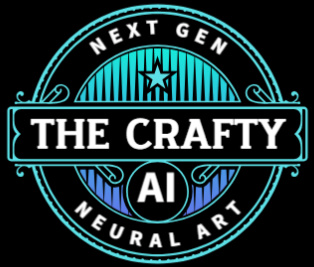How does AI create Images?
This is one of the most asked questions about AI image creation and the answer is quite simple but the technology behind it seems almost otherworldly. Let's clear up some myths.
Artificial Intelligence (AI) has revolutionized the creative landscape, enabling machines to generate stunning, realistic, and imaginative images from scratch or based on user inputs. From photorealistic portraits to abstract art, AI-powered image generation has become a powerful tool for artists, designers, and creators. But how does AI create these images? This article explores the underlying technologies, processes, and applications of AI image generation.
The Foundation: Neural Networks and Machine Learning
At the heart of AI image generation are neural networks, computational models inspired by the human brain. These networks, particularly deep learning models, consist of layers of interconnected nodes that process data. For image generation, two types of neural networks are commonly used: Convolutional Neural Networks (CNNs) and Generative Adversarial Networks (GANs). CNNs excel at analyzing visual data, while GANs are designed specifically for generating new content.
Machine learning, a subset of AI, enables these networks to learn patterns and features from vast datasets of images. By training on millions of pictures—ranging from landscapes to human faces—AI models identify elements like shapes, textures, colors, and compositions, which they use to create new images.
Key Technologies in AI Image Generation
1. Generative Adversarial Networks (GANs)
GANs are a cornerstone of AI image generation. They consist of two models: a generator and a discriminator. The generator creates images from random noise or input prompts, while the discriminator evaluates whether the images are real or fake. The two models are trained together in a competitive setting, where the generator improves its output to "fool" the discriminator, and the discriminator gets better at spotting fakes. Over time, this process results in highly realistic images.
For example, NVIDIA’s StyleGAN, used in tools like Artbreeder, produces photorealistic human faces by refining features like eyes, skin texture, and hair through iterative training.
2. Diffusion Models
Diffusion models, such as those powering DALL·E 2 and Stable Diffusion, have gained popularity for their ability to generate high-quality images from text prompts. These models work by adding noise to images in a dataset and then learning to reverse the process, gradually "denoising" random patterns into coherent images. By guiding this process with text descriptions, diffusion models can create images that closely match user prompts, such as “a futuristic city at sunset” or “a cat wearing a spacesuit.”
3. Transformer-Based Models
Transformers, originally developed for natural language processing, are now used in image generation. Models like DALL·E and VQ-VAE-2 leverage transformers to understand and combine text and image data. Transformers break down inputs into smaller components, allowing the AI to generate images by predicting and assembling visual elements based on textual or visual cues.
The Process of AI Image Creation
Training the Model: AI models are trained on massive datasets, such as ImageNet or proprietary collections, containing millions of labeled images. During training, the model learns to recognize patterns, styles, and structures.
Input Processing: Users provide inputs, such as text prompts (“a dragon flying over a mountain”), existing images, or random noise. The AI interprets these inputs using its trained knowledge.
Image Generation: Depending on the model, the AI either generates an image from scratch (GANs), refines noise into an image (diffusion models), or predicts visual tokens (transformers). This step involves complex mathematical computations to ensure coherence and quality.
Refinement and Output: The generated image may undergo post-processing to enhance details or align with user preferences. Some tools allow users to tweak parameters, like style or resolution, for customized results.
Applications of AI Image Generation
AI image generation has diverse applications:
Art and Design: Artists use tools like Midjourney to create unique artworks or mockups.
Entertainment: AI generates concept art, storyboards, or visual effects for films and games.
Marketing: Brands create tailored visuals for advertisements or social media.
Education and Research: AI simulates scientific visualizations, such as molecular structures or astronomical phenomena.
Challenges and Ethical Considerations
While AI image generation is powerful, it raises challenges. Generating realistic images can lead to misuse, such as creating deepfakes or misleading content. Ethical concerns include copyright issues, as models are trained on existing artworks, and the potential for biased outputs if training data lacks diversity. Developers are addressing these issues by implementing safeguards, like content filters, and exploring fairer data practices.
The Future of AI Image Generation
Advancements in AI are making image generation faster, more accessible, and more creative. Emerging models are improving resolution, coherence, and customization, while reducing computational costs. Integration with augmented reality (AR) and virtual reality (VR) could enable real-time, immersive image creation. Additionally, open-source platforms like Stable Diffusion are democratizing access, empowering creators worldwide.
Conclusion
AI image generation is a blend of cutting-edge technology and creativity, driven by neural networks, GANs, diffusion models, and transformers. By learning from vast datasets and user inputs, AI can produce images that rival human artistry. As the technology evolves, it promises to reshape industries while posing new ethical questions. Understanding how AI creates images not only demystifies the process but also highlights its potential to augment human imagination.

